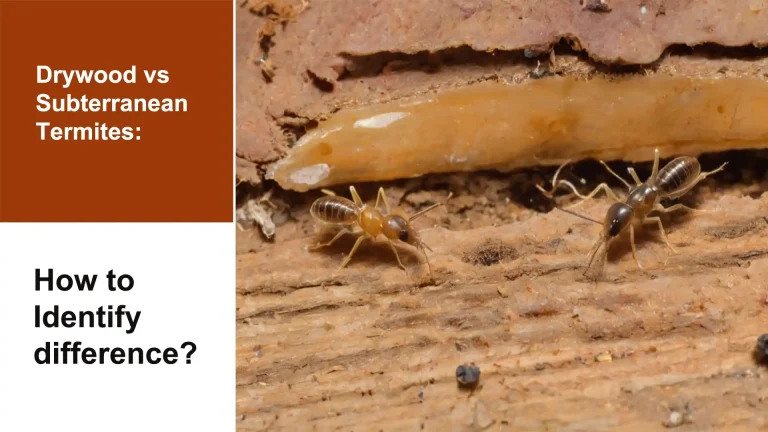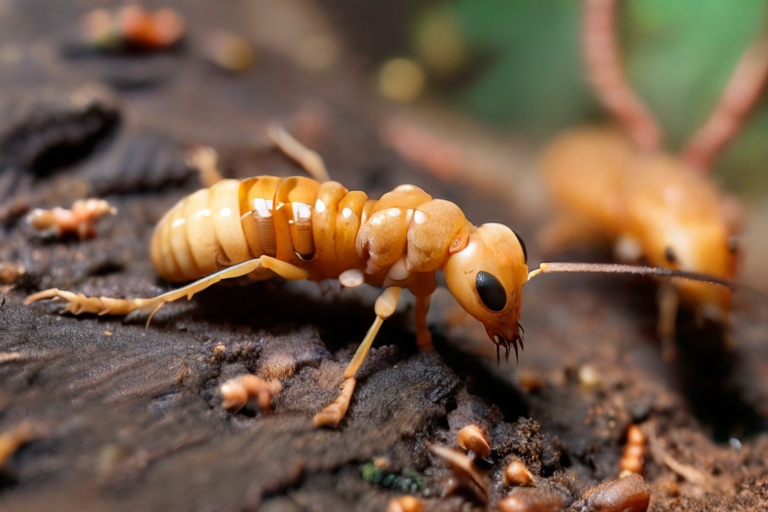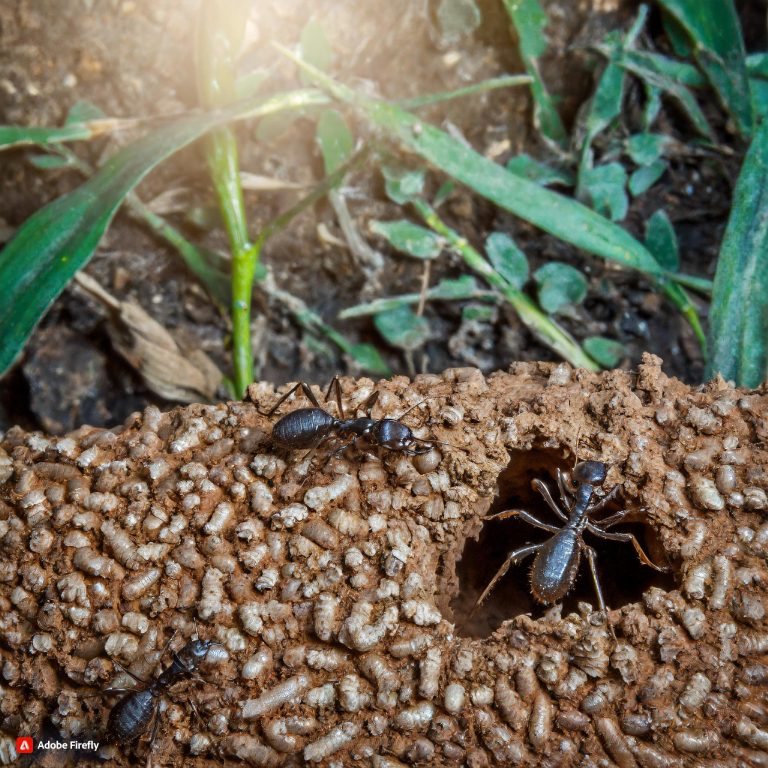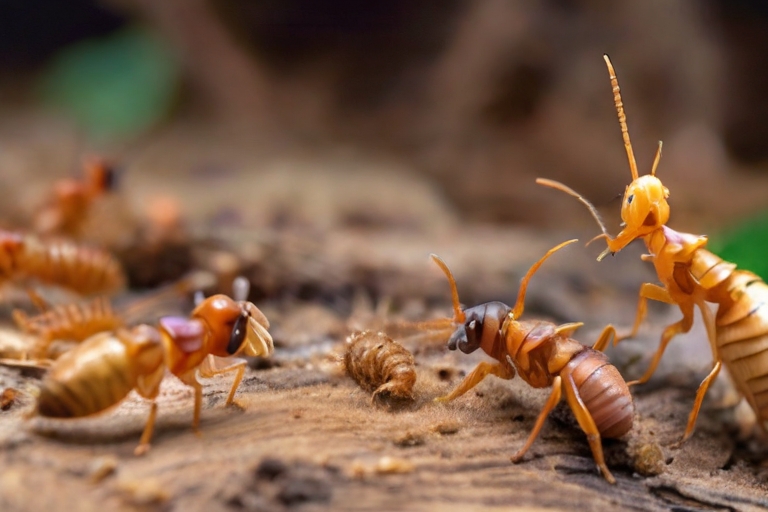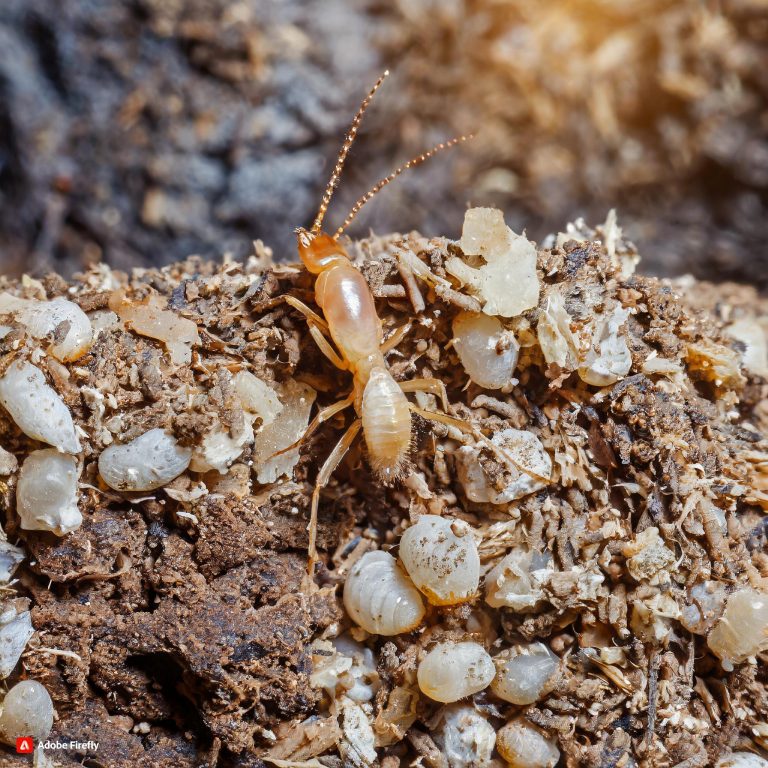What Are Cathedral Termite Mounds? Facts About Nasutitermes triodiae Structures
- An Introduction to Cathedral Termites
- Where nasutitermes triodiae Are Found
- The Appearance of Cathedral Termite Mounds
- How Cathedral Termites Build Their Mega-Mounds
- 10 Fascinating Facts About Cathedral Termite Mounds
- Threats Facing Cathedral Termite Mounds
- The Remarkable Legacy of Cathedral Termite Mounds
- FAQS
Cathedral termite mounds are truly a marvel of nature and insect engineering. These elaborate towering mounds built by colonies of Nasutitermes triodiae termites are found across northern Australia. With ornate spires reaching up to 5 meters tall, they resemble Gothic cathedrals in their architecture – hence their name.
In this article, we will uncover fascinating facts about these iconic structures and the termites that build them. Whether you’re an insect enthusiast, architect, or simply curious about the natural world, you’ll gain new appreciation for the complex behaviors and social organization of these mound-building termites.
An Introduction to Cathedral Termites
Cathedral termites, scientifically known as Nasutitermes triodiae, are a fascinating species of termites. They are mostly found in the tropical woodland habitats of northern Australia. These termites are known for their impressive architectural skills.
Cathedral termite mounds are large, towering structures made entirely out of dirt, saliva, and termite excrement. They can reach heights of up to 8 meters (26 feet) or high. They are typically shaped like a tall, slender tower.
These mounds are remarkable in their size and intricate design. The distinct feature of cathedral termite mounds is their unique ventilation system. The termites build a network of thin tunnels throughout the mound, allowing air to circulate and regulate the temperature inside.
This helps to keep the interior of the mound cooler during the day and warmer at night. The mound’s structure is created by thousands of termites working collaboratively. Each termite has its own role in the construction process.
Soldiers defend the colony against invaders. Workers gather food. Reproductive termites ensure the growth of the colony.
The mound’s exterior features a complex system of arches and pillars that provide strength and stability. The arches support the weight of the mound. The pillars allow for expansion and prevent collapse.
It’s this intricate architecture that gives cathedral termite mounds their name, as they resemble the grandeur and grandeur of a cathedral.
Aside they are great architects of the world, these Giant mound termites play a vital role in the ecosystem. They break down dead wood and other plant material, contributing to nutrient recycling in the environment.
Additionally, their mounds serve as a home for various other organisms such as ants, spiders, and geckos.
So, the next time you find yourself in northern Australia’s tropical woodlands, keep an eye out for these remarkable structures built by the Queensland termites. They are a testament to the amazing capabilities of these tiny insects and a symbol of nature’s ingenuity.
Where nasutitermes triodiae Are Found
These northern Australian termites thrive across tropical areas like the Northern Territory, Queensland, and Western Australia. Their iconic mounds stand prominently in savanna and grassland landscapes.
The Diet and Habits of Cathedral Termites
As subterranean termites, they feed on cellulose material such as grass, plant roots, fallen wood, and trees by tunneling through the soil. Workers venture out from underground colonies and forage for food to bring back. Like other termite species, cathedral termites work as a collective unit for the good of the mound.
The Caste System and Life Cycle
These termites have a complex caste system with specialized groups:
- Workers – gather food, build tunnels, care for eggs
- Soldiers – defend the colony with large mandibles
- Reproductives – queen lays eggs, king fertilizes them
Young termites develop through complete metamorphosis from eggs to larvae to various castes.
The Appearance of Cathedral Termite Mounds
Cathedral termite mounds are architectural wonders. Towering up to 5 meters tall, these elaborate mud structures have ornate spires, columns, turrets and shafts resembling grand cathedrals.
The termites construct them from clay, soil, and saliva. Mound color varies from deep orange to gray based on soil composition in the region. Their monumental size makes them easily visible across the landscape.
How Cathedral Termites Build Their Mega-Mounds
The mound-building process of cathedral termites is a complex, coordinated effort:
- Workers collect balls of clay and soil in their mandibles and carry them to the mound construction site.
- At the site, they add their saliva and knead the clay balls into the existing mound walls.
- The termites carefully mold the material, grain by grain, into the elaborate patterns.
- Deep inside the mound are ventilation shafts and an intricate network of tunnels and arches.
- Temperature and humidity are regulated to provide the ideal microclimate.
- Pheromone trails guide the termites’ building behavior.
Growing Up to 5 Meters Tall
It’s incredible that mounds measuring over 16 feet tall can be built by tiny insects. Australian subterranean termites rank among the tallest insect-built structures in the world. The average size ranges from 2-3 meters high.
Key Functions of Cathedral Termite Mounds
These massive mounds serve important survival functions:
- Regulate internal temperature and humidity
- Release excess heat to keep chambers cool
- Protect the colony from intense sun and heat
- Guard against heavy rains and flooding
- House the royal nursery chamber
- Provide elevated lookout points to spot predators
- Enable ventilation without moisture loss
Evolutionary Adaptations for Mound-Building
To construct such immense and intricate mounds, Nasutitermes termites evolved specializations:
- Strong mandibles to carry mud balls
- Social organization and communication
- Ability to mix mud and saliva into “cement”
10 Fascinating Facts About Cathedral Termite Mounds
Towering termite mounds reveal the incredible achievements of social insect engineering. Here are some mind-blowing facts about these structures:
- A single mound can house up to 1 million termites
- Mounds can be over 100 years old – some of Australia’s oldest insect structures
- Only 10% of mounds are active – many are ancient relics
- The mounds provide habitat for other species like lizards, frogs, insects
- Their size helps regulate temperature to survive intense heat
- Mounds can weigh over 4000 kg when active
- The record tallest mound was 7.5 meters high
- Their intricate design allows ventilation without losing heat or moisture
- Aboriginal groups sometimes use mounds as burial sites
- Magnetic elements in the mounds absorb solar radiation
Threats Facing Cathedral Termite Mounds
While cathedral termite mounds have survived for millennia, several threats face them today:
- Habitat destruction from farming, development, and mining
- Damage from unmanaged fires
- Climate change impacts on rainfall patterns
- Invasive species competing for resources
Protecting areas where these termites thrive will be important for conservation. More research is also needed to understand long-term climate change effects on these iconic structures.
The Remarkable Legacy of Cathedral Termite Mounds
When exploring Australia’s tropical north, keep an eye out for the towering cathedral mounds rising from the grasslands. These intricate structures reveal the astounding collective intelligence of termite colonies over generations. Their architectural grandeur is a testament to the transformative power of tiny insects working cooperatively toward a common goal. Even hundreds of years after abandonment, Nasutitermes triodiae mounds continue to inspire awe and wonder.
FAQS
Are cathedral termites aggressive?
No, cathedral termites are not considered aggressive insects. They will focus on fleeing rather than fighting if their mound is disturbed. Soldiers may defend against intruders but the workers do not act aggressively toward other animals or humans.
What are cathedral termites known for?
Cathedral termites are best known for constructing enormous, elaborate mounds rising up to 6 meters tall. Their mounds are famous for the spires and pillars that resemble grand cathedrals, giving them their name.
What is a cathedral termite biome?
The cathedral termite’s native biome is the tropical savanna woodlands of northern Australia. Their mounds proliferate in areas with nutrient-poor soils, grasslands, and eucalyptus trees. The tropical climate provides a warm, humid environment.
What is cathedral termite behavior?
Cathedral termites exhibit complex colonial behavior. Each insect has a specialized role whether as a worker, soldier, or reproductive. They use pheromones to communicate. Their activities are highly coordinated to build and maintain the massive mounds.
Where are cathedral termites on the food chain?
Cathedral termites occupy a position as secondary consumers in their food chain. They feed on dead and decaying wood and plants. In turn, they are prey for various reptiles, mammals, and birds higher up on the food chain. Their role is breaking down plant biomass.


